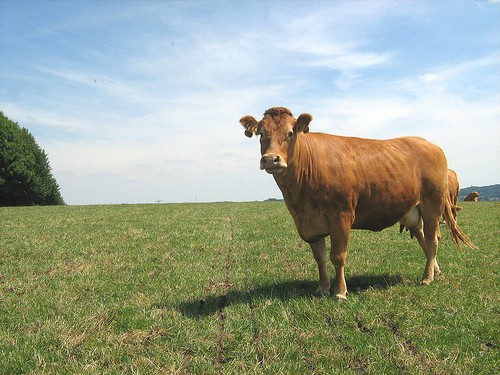
Leo Viëtor / Flickr Creative Commons
In the post A Dutchie By Any Other Name Would Smell As Sweet, we talked about some of the traditions behind Dutch names: where they came from, how they were registered, why there are male and female versions to a variety of Dutch names, and why some Dutch names are so darn long!
Reader Irma Lommen-Salden recently got in contact to tell us about the history of Dutch names in the south of the Netherlands, which is apparently quite different.
Though she didn’t have any specific websites or documents to site as a source, her own website, Limburg Emigrant, is a testament to her passion for the subject, and you are sure to find some excellent references there.
Here’s what she had to say about naming traditions in the south.
“Although the Netherlands is a very small country there are a lot of differences between the regions. Differences in many ways; in customs, in name giving, in records keeping, in religion most of all!
While the North is mostly Protestant (in many different ‘tastes’), the South is mostly Catholic.
Vital registration begins here in the south as early as 1797 in some places and mostly in 1799. Last names are kept much, much longer before that. Although we also have our share of Jansen/Janssen, we have much more ‘normal’ names over here. Last names after a first name like ‘Gerards’ after the first name Gerard, also named Gerrit. Last names after a profession as Rademakers/Rademacher/Ramakers; after the profession of radmaker (wheel maker), names after regions or towns also can be found.
The long line of first names you used in your column is used here too but not that long, just a few (up to 4) generations and only used ‘in de volksmond’ by people among each other in the village. It would sound something like ‘Willem van Beth van Aartje’ – Willem the son of Beth (Elizabeth) the daughter of Aartje (Adrianus). I could go on forever about this!
First name giving of the children is very simple; the first son is named after the grandfather of father’s side, the first daughter after the grandmother of mother’s side. After that, the family line is followed. For instance; I am the second daughter in our family and I am called after my grandmother on my father’s side, my second name is after my grandfather on my mother’s side and my third is of my grandfather on my father’s side; Catharina Andrea (Andreas) Johanna (Johannes) but I am called Irma J Those three names were not always usual; started with one, became two ……. And the baptize names were always Latinized; so Jan became Joannes, Tring became Catharina (that’s why I am called Irma) Graad or Gerrit became Gerardus etc etc.”
Thanks Irma for your input! Whether that helps or further confuses you, it’s good to be reminded that, small though this country may be, it is filled with diversity!






Comments:
Ann van den Akker:
Thank you for your interesting article ,to me it’s always Holland ,I haven’t been there for over 60 years but love it still and always will ,
Marie-Jacqueline:
Interesting blog you have!
I’m Dutch and I live in Province Limburg!
Two sites that might interest you:
On Limburgish names:
http://www.behindthename.com/glossary/view/limburgish_names
On the limburgish dialect
http://www.limburgs.org/en/limburgish